Photos courtesy of Bandar at Food Studio, Norway
On my third day at Oya festival in Olso I receive a brief text message that reads: "Hello? Are you into food? Basically, I have a space for Lindstrøm Michelin brunch tomorrow. Let me know if you can cover this." I laugh to myself thinking, ‘Ha! Imagine if this was some sort of event that combined the cosmic disco of the Norwegian producer Lindstrøm and the world’s best food.’ Luckily, I remember that I am actually in Norway, and instead of just deleting the text I reply: "Tell me more…"
Approximately 24 hours later I’m standing outside Maaemo, Norway’s most highly rated restaurant. It’s situated on the relatively unlovely Nordenga Bridge, overlooking a giant snaggle of railway lines coming out of the business end of Sentralstasjon under a half finished skyline of office blocks. The fine dining establishment, which opened at the end of 2010 and won two Michelin stars last year, stands in opposition to its less than fine surroundings, however.
By the time I’m being introduced to the Maaelstrøm Brunch concept by Julie Forchhammer, the Environmental Manager of Oya Festival, I realise that I’ve probably left it too late to admit to the fact that I know next to nothing about food or restaurant reviewing – or even to the fact that, outside of Norway, I’m a strict vegetarian who rarely eats out. Ms Forchhammer says that over 90% of the food on offer at the festival is organic and it was important for them to celebrate natural, healthy food. "Organic food is a big part of our project, but it is festival food made for lots of people who are in a rush."
As we stand blinking in the morning sunlight, sipping juice made from berries picked in the local forest, ignoring the roar of trains, she points at the large glass fronted building. "We wanted to do something with Maaemo, this new restaurant in Oslo. It’s part of the New Scandinavian Cuisine thing. It’s rated next to Noma in Copenhagen as one of the best restaurants in Northern Europe."
She laughs as if she has just thought of something ridiculous: "We had to come up with a good idea for what they could do with us, as we couldn’t just have these chefs cooking burgers for people."
She explains how she came up with a plan. "Around the time Lindstrøm’s last album Smalhans [2012] came out, I was sitting in my local bar having a beer and listening to it. Each of the songs is named after one of six traditional Norwegian dishes. And it just clicked. I knew the Maaemo guys were really into music and I knew that Lindstrøm is really into food. And I thought, ‘I’d really like to taste that album. Who could "make" that album?’ So we asked the head chef of Maaemo and Lindstrøm – and they just clicked completely. They were really excited about the idea."
Obviously, the majority of Oslo-ites can’t afford to eat at Maaemo. In fact, the owners go to pains to let me know that they can’t even afford to eat in their own restaurant – so they make a habit of doing a couple of events like this a year, where a bunch of lucky locals on average (Norwegian) wages can get the full fine dining experience that would normally be well out of their price range. (This largesse is extended to yours truly and a writer from the music publication Crack in Bristol as well – however not to Lindstrøm himself, which makes me feel exceedingly guilt ridden.)
She explains how the other 28 recipients of the meal were chosen. "There was a mailing list and 400 people signed on to it. On June 13, everyone got an email at the same time saying that the tickets were in the park [the location of the Oya festival – among the city’s old ruins are]. It said, ‘Go and find them.’ People rushed out to the park, searched the ruins, found them there and paid for them. So the people who are attending really had to struggle to get the tickets. And it is an expensive lunch, but it’s also a lot cheaper than a meal at the restaurant would be."
As the lucky ticket holders start turning up, we meet one of the guys who runs the restaurant. Pontus Dahlstrøm, the Finnish sommelier, front of house manager and moustachioed co-owner of Maaemo, may look like a Dalston indie scenester who buttons his shirt all the way to the top and plays in a band that has a triangle in place of the letter ‘A’ in its name, but this belies how hard he obviously works. "It’s a small restaurant with only eight tables," he says. "We only have a set menu, which has between 22 and 25 courses per night depending on what we can get from our local farmers and what we pick in the forest ourselves. Maaemo is an old Finnish word which means Mother Earth. We wanted a word which we could brand ourselves. We didn’t want a French word which would have associations with French cuisine. We only work with local organic produce and everything we use is from Norway which is quite unique.
"We have a few signature dishes. When we started we had a dish which was more famous than the restaurant. It was called ‘Butter from Røros’ and that became really, really famous, because it’s a dessert and it’s only butter – what more could you want?! Also, we have an oyster serving that has been on the menu every single day since we opened. It’s an emulsion, or an oyster cream with a blue mussel jelly and a warm green dill sauce. It’s very visual, and also the flavour… it tastes like the ocean… like oysters… it has very pure, delicate flavours."
"We are young guys in our early 30s," he adds, "and if we wanted to eat in Maaemo ourselves we’d have to save up for a long time. So at least once a year we do something like this where we don’t charge for anything apart from the drinks and the trade prices it costs us to buy the ingredients. It might not be any easier to get access to the restaurant, but for those who can get tickets, it’s certainly more affordable. It’s a way for us to remember where we came from."
He tells me about international recognition. "We got good reviews when we opened, but we weren’t that busy. It was kind of tough. But suddenly on March 14, 2012, it happened overnight. We were like a small young talent in a local football team who goes straight to playing for the Champions League. We were the first Scandinavian restaurant to go straight to having two Michelin Stars overnight. Things started to move very fast. Today we serve about 40-50% foreign guests who fly in just to eat at the restaurant. We run a filthy expensive restaurant. We would have to save up ourselves if we wanted to eat in here. So we thought that we shouldn’t distance ourselves from who we really are."
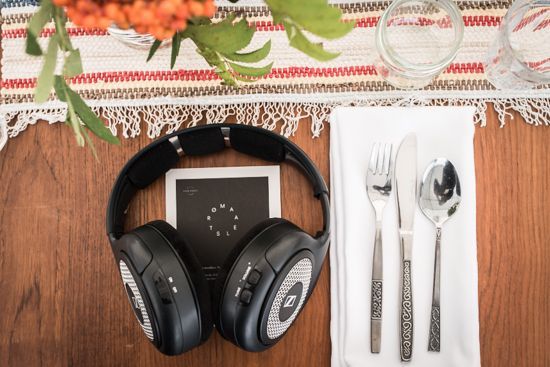
We walk over to the festival site where the last of the litter is being collected from the day before and sorted for recycling, while various stalls and stages are setting up for the day’s business. On the main stage, Cat Power’s band are running through a soundcheck. I’m introduced to a lady called CeciIie from Food Studio who has been working on this project for the last six months, from introducing everyone to making sure that it all runs smoothly and is obviously both relieved and terrified now that the big day is here. She invites me to come back to Norway later in the year to take part in other Food Studio events. I’m a bit skint and can’t afford the airfare but the food’s so good I may just steal a peddalo and make my own way over. I walked past the marquee where we’re eating several times yesterday, when it contained merry festival goers drinking lager out of plastic glasses. Now the walls have been taken off and two long wooden tables erected. At one end of the tent, four chefs are busily preparing a lot of dishes, and Hans-Peter Lindstrøm is stood directly next to them with a headphones on, fiddling away with a MacBook attached by cables to a mixer and FX. There aren’t any speakers in the tent, however. At each place setting – which consists of several glasses, very good quality cutlery and a starched white napkin – is a pair of wireless Sennheiser headphones.
The other partner in the restaurant – the astoundingly named Dane, Espen Holmboe Bang – introduces us to the concept again. "Each dish was inspired by a track off the Smalhans album," he declares. "It’s weird to say that food is inspired by music, and interpreting it like this drove us close to madness a few times. It was a very weird way to work. I won’t tell you what each course is, but I hope you enjoy it."
He carries on, but I’ve got the measure of what’s going on now, and without waiting to be asked, I put the headphones on and turn up the volume. The music consists of cosmic washes of synth tones. There is a very organic, real sounding layer of noise above the analogue music being fed through lots of reverb, and it takes me a few minutes to realise that the ominous layer of clicking, rumbling noise is simply that of the kitchen staff cooking. Or at least, it is the processed noise of some kitchen staff, if not these ones.
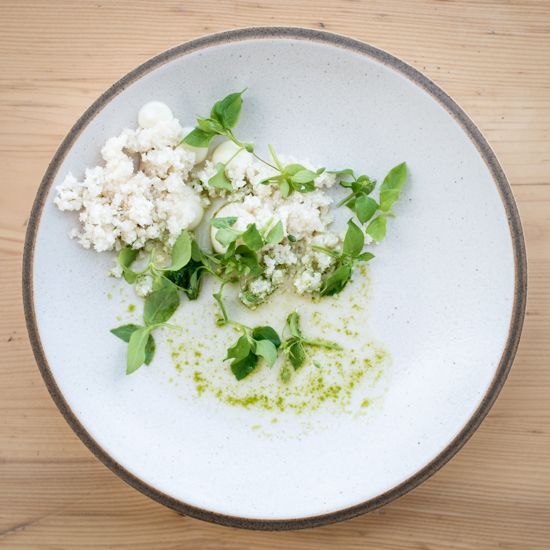
Dishes – which conform to every stereotype of expensive nouvelle cuisine in their tiny portions, unrecognisability of contents and fancy construction – are placed in front of us, and the track ‘Rà-àkõ-st’ (Norwegian for something like "raw food") starts. I have absolutely no idea what the food is, but it consists of a white emulsion, delicate cress-like green leaves and some sort of quinoa-like grain sitting in a clear liquid spotted with green. I’m reliably informed by another guest that the stuff I initially thought was quinoa or roe was, in fact, cauliflower shavings. In fact, the ingredients are: granulated cauliflower, cauliflower purée, cauliflower sauce, and wild herbs picked from the woods just behind the main stage where Cat Power will be playing live later. It takes me a while to acclimatise to the actual food and I enjoy the track, which I’m already familiar with, more.
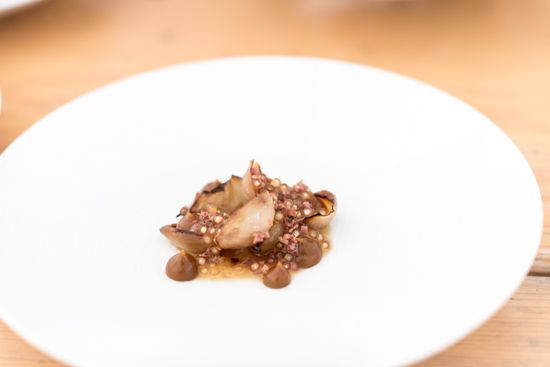
If I was out of my depth with the first dish, then the second looks like food from the future. And an alien future at that. Miniscule round globules of jelly that measure about 0.5mm in diameter and tiny cubes of red meat that a Borrower would find unsatisfactory and are barely visible to the naked eye, sit in tiny onion skins surrounded by comically small mounds of gravy that have been piped onto the plate in similar amounts to the topping you would find on a midget gem. It may look like a parody of nouvelle cuisine, but it packs an explosive taste, each tiny morsel giving a sharp, clearly defined, richly sweet or savoury taste. This is quite clearly the best food I’ve ever eaten, no matter what the size of the portion. This is some scientific shit right here that would no doubt reveal Heston Blumenthal’s tarmac and espadrille flavoured ice cream to be pretty unadventurous in scope, execution and taste. The track we’re listening to on our headphones is ‘Lāmm-ęl-āār’, which I’m guessing has something to do with lamb. Our next level version is essentially made from grilled pickled onions, onion purée, tapioca and fenalår, however.
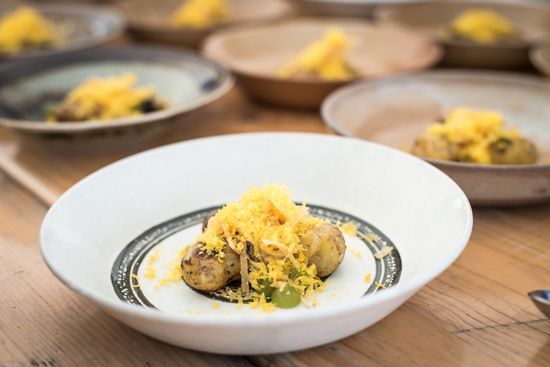
What with the music, the food and the sheer surreality of the situation, I’ve kind of been ignoring the people sat round me. But when I ask the couple next to me what ‘Ęg-gęd-ōsis’ is, they are happy to tell me that the literal translation is egg nog – which doesn’t necessarily have alcohol in it in Norway. (I’m teetotal.) My dish contains a beaten mousse of egg whites and sugar with a mound of flambéed baby potatoes, spots of green emulsion, delicate scraps of batter that melt on the tongue, and underneath it all a tiny poached egg. Which bird laid it I’m not sure, but I feel confident in saying it didn’t come out of an ostrich. This is the first time I’m really conscious of any kind of synergy between the food and the music at all, which stems essentially from the airy fairy notion I have that both the song and the food is ‘playful’. This isn’t a synaesthetic affair though. No one has fed me acid. I haven’t gone mad or suffered a violent shift in brain chemistry, I’m simply noticing a subtle textural complementation. (I later find out that it is a poached quail egg, and the scraps of batter are in fact tiny splinters of frazzled garlic.)
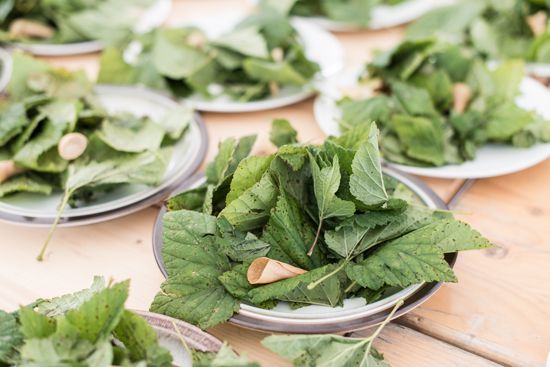
I’m told by my neighbours that dish number four (‘Vōs-sākō-rv’) is "the classic Norwegian dish", a sausage from the Vōs region of the country. When the plate turns up, however, there are no bangers, just a couple of crisp small thin pastry cones with a clear jelly inside. They are lying on a bed of gnarly looking tree leaves. We are warned not to eat the leaves and to eat the cones in one bite each. They are delicious. I save my second cone for the jagged caustic build of the track and I get a mini-rush of sheer food pleasure. I’m starting to feel even more of the crossover in complimentary textures. So are the other diners with each fresh glass of expensive-looking wine, and several of the men present are nodding vigorously in time with the music. Actually, so am I, and I’m only drinking freshly squeezed apple juice. (I’m kind of dismayed to find out later that the morsels are chicken liver parfait in a pastry cone, but then I guess this is what happens when you’re a vegetarian all year round except for when you visit Norway.)
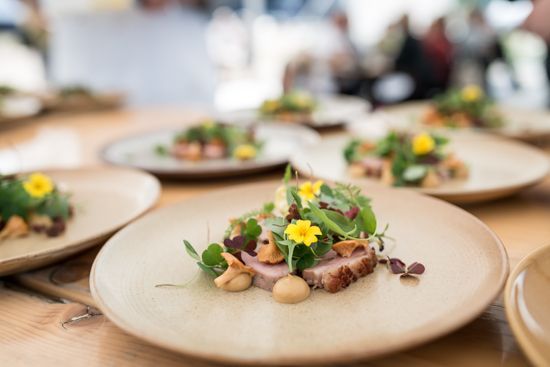
Track/dish number five is ‘Fāār-i-kāā’, which translates as lamb in cabbage and is, apparently, a rustic, autumnal dish popular among farmers. Essentially this hearty fare is just lamb, cabbage, peppercorns and salt boiled for a very long time. Apparently this dish rouses such strong national feeling that there is even a group called Fårikålens Venner or, The Friends Of Lamb In Cabbage Society. And if it tastes anything like this you can see why (although I get the impression that what I’m eating wouldn’t necessarily be approved of, or even recognised, by any local farmers). It consists of not so much medallions of lamb as large buttons of the meat, but it is very succulent, tender and dressed in delicious mustards, edible flowers and tiny mushrooms that can only be described as magic.
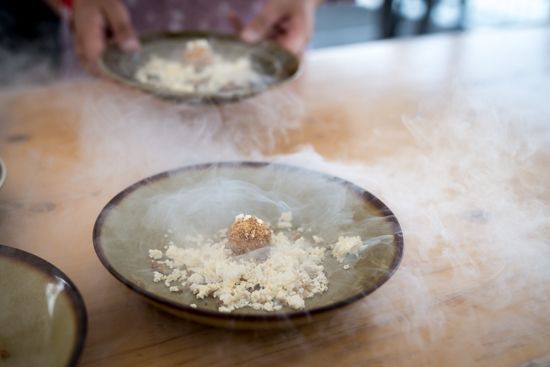
The name of dish number six is ‘Vā-flę-r’, and this means waffles. Even I can work this much out. Every time I go to the North of Norway I seem to have a lot of freshly made waffle with jam and soured cream. And my neighbour confirms: "This is the sort of thing that you get when you go to see your parents or your grandparents – waffles and coffee." Mum and dad, if you’re reading you’re welcome to try and make me this version. The food has been prepared using liquid nitrogen, and thick, dry smoke is pouring off it. The waffle has been broken into crumbs and fried in honey with chips of ice cream, butterscotch and what the chef describes as a liquid waffle ball.
It’s over too quickly but the small portions, of course, have added up to exactly the right amount of food. Lindstrøm is having a post performance drink when I talk to him. "I think maybe half a year after Smallhans came out I got involved in this project," he says. "After the summer I got a call from Julia from Oya, and she thought it was maybe a good idea to do something with Maaemo. And I was really positive to this, because I’m a foodie myself."
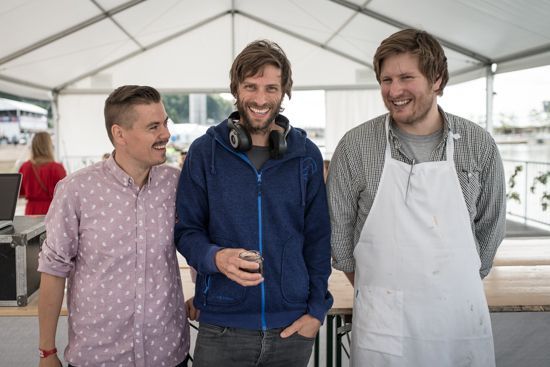
Pontus, Lindstrøm and Espen
Speaking about the mini-album, he adds: "I didn’t plan to name all the tracks after food before starting on the project. It’s all basically instrumental music, and I can call these tracks whatever I like. And usually after doing an album or a song or a remix, I spend a few days at home just doing something different. I often end up making a lot of food.
"I guess I was in the kitchen cooking and then the lightbulb switched on. I thought, ‘Woah, this is actually very similar to making music.’ And that’s how I had this silly idea to make a food related concept album."
It’s certainly a good job he makes really lovely, smooth, delicately textured music, as it’s hard to imagine having to eat Insane Clown Posse or Anaal Nathrakh’s tasty concept album.
"I guess I ended up using dishes that my mother used to cook for us when we were kids," he says, explaining how the tracks were named. "Really, really basic food that is very simple to cook, made with ingredients that are easy to get, like country food or what you’d call comfort food. Some of the dishes are like desserts, like the last one, which is waffles. And the first one is a starter, just a vegetable thing. I like all of them I guess."
When talking about the exclusivity of the event, he says: "To be honest, I didn’t get to taste any of the dishes apart from the last one, the waffles. But I was looking and smelling as they were being prepared. So it’s hard for me to say how the new dishes fit exactly with the music."
And what were those clattering effects heard during the between-course ambience? "I sampled the noise of the people preparing the food, but I did it beforehand, in the kitchens at Maaemo. You can hear some sound of knives, frying pans and things like that."
I suggest that there is not just a mutual appreciation society but also a mutual jealousy society between Lindstrøm and Pontus and Espen. They agree. "We want to be him," the Maaemo owners both chime in unison. "We want to be rock stars! We want to turn on the dancefloor."
Lindstrøm just smiles and says "I’m no rock star", before packing his gear up to leave.
For more details on Maaemo click here. Lindstrøm has a new album with two mystery collaborators due early next year…


